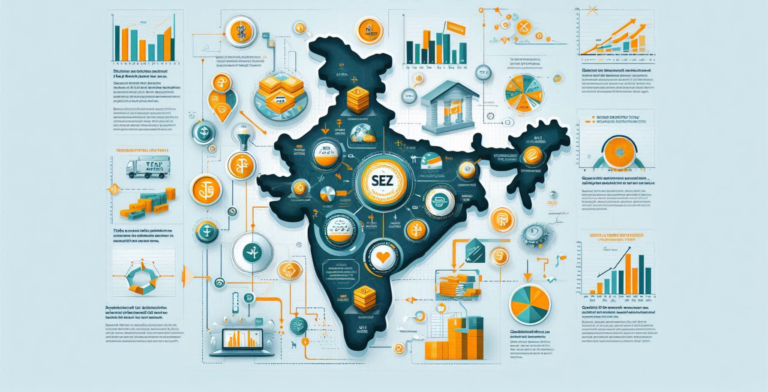
Abstract
The digital age has altogether transformed how intellectual property (IP) is created, shared, and consumed. New opportunities and problems emerge for enforcement in this new landscape. Widespread access to creative works has been facilitated by digital platforms and peer-to-peer networks and global connectivity, but at the same time, unprecedented levels of copyright infringement, trademark counterfeiting, and patent violations have occurred. It explains the complexities surrounding IPR in such a changing environment by going through international treaties, domestic regulation, and advancements in technology that seem to have jurisdictional conflicts and anonymity on the internet as its central points of criticism against the older mechanism of enforcing such rights.
The study also discusses innovative solutions, such as blockchain for secure IP tracking, AI-driven infringement detection, and collaborative frameworks involving public and private stakeholders. This research highlights the need to balance the rights of IP holders with user accessibility and global cooperation in adapting legal and technological frameworks to the demands of the digital era. Ultimately, it calls for a multi-faceted approach that will strengthen IPR enforcement while encouraging innovation, creativity, and fair use in a borderless digital economy.
Key Words: Intellectual Property Rights (IPR) , Digital age enforcement , Copyright infringement , Blockchain for IP , AI – Driven infringement detection .
Introduction
As is the case of IPR serving as a principal foundation for enabling innovation, creation, and therefore economic growth for creators and inventive minds, creators and inventors are granted all rights over and above their discoveries. These have been categorized and include patents and copyrights, and trademarks and more recently, including trade secrets on which inventors and artists make claims for consideration and compensation, respectively. In doing so, IPR not only safeguards individual creators but also encourages investment, research, and technological innovation in all industries.
The global nature and decentralization of the internet facilitate the spread of infringers across various jurisdictions, where they can avoid the use of traditional mechanisms for enforcing rights. The borderless environment of the digital world complicates the ability of national governments and enforcement agencies to regulate and combat infringement effectively.
In many cases, offenders take advantage of legal loopholes, differences in international laws, and jurisdictional conflicts to escape liability. Furthermore, the anonymous nature of Internet users, helped by tools such as virtual private networks (VPNs), proxy servers, and decentralized platforms, makes it nearly impossible to detect and sanction IPR violators. Dark web marketplaces and P2P networks have amplified these enforcement problems, as well, offering new channels for illicit trade in pirated content, counterfeit goods, and stolen intellectual property.
Although the existing legal frameworks on IPR enforcement are in place to safeguard national and international rights over intellectual property, it does not keep pace with the fast-changing face of digital society. Most of these national and international regulatory regimes, for instance, the WIPO treaties and TRIPS Agreement, provide the framework for enforcing IPRs, but the extent of interpretation and implementation differs amongst countries. In addition to that, current mechanisms of litigations cease-and-desist orders, or penalties are no longer effective measures because of some legal procedures where one has to wait for, the complexity issues with cross-borders, technological capacity, to name a few.
Currently, new solutions, such as blockchain and artificial intelligence, begin to open innovative opportunities for making IPR enforcements more modern and effective. Blockchain is an example that can be tamper-proof and decentralized for recording ownership of intellectual property, rights management tracking, and authenticity verification of digital assets. This can be particularly beneficial in fighting against counterfeiting and ensuring the transparency of registration systems in patents and copyrights. AI tools also can help identify and remove pirated content, find patterns of infringement, and automate enforcement against violators.
Harmonized enforcement mechanisms have to be worked out between governments, industry leaders, and regulatory bodies so that intellectual property laws remain relevant and effective in the face of digital advancements. The platforms such as Amazon, eBay, and Alibaba have already begun implementing AI-based counterfeit detection systems, demonstrating how technology and policy can work together to mitigate infringement issues.
Third, public awareness education plays a necessary role in helping to reduce IPR violations. Most consumers conduct pirating, buy counterfeit or pirated material without knowing how this affects an economy and related laws. Helping the users educate on the needs to respect such rights and appreciate the impact when they infringe will help facilitate compliance and promote ethical consumption of the products offered.
In conclusion, although digital technologies have created significant enforcement challenges for intellectual property rights, they have also introduced new tools for combating infringement. The borderless nature of the internet, the anonymity of online actors, and the rapid evolution of technology demand an adaptive and multi-dimensional approach to IPR enforcement. Building more robust international frameworks, making best use of the emerging technologies, promoting cross-border cooperation, and raising public awareness are crucial for a well-balanced and efficient intellectual property protection system in this digital era. Innovative enforcement strategies and cooperative approaches by governments, businesses, and stakeholders would promote intellectual property safeguarding, innovative activities, and sustainable economic growth in this new digital environment.

Problems Faced in Enforcing IPR in the Age of Digitalization
Transnational Nature of Digital Platforms
With a transnational nature, the internet poses jurisdictional challenges in enforcement. The infringers exploit often-manifold differences between the varied national laws and render it difficult for enforcement agencies to collaborate across borders. The popularization of e-marketplaces further enhances the global distribution of counterfeit articles, thereby making enforcement increasingly complex.
Anonymity and Decentralization
The anonymity extended by the internet creates challenges in identifying those who infringe IPR laws. The use of VPNs or proxy servers and the decentralized structure of blockchain make tracking infringers difficult. Peer-to-peer (P2P) trades, as well as the dark web, further complicate enforcement as they provide forums for uncontrolled sharing of pirated materials and the unregulated exchange of counterfeit goods.
Rapidly-Paced Technological Advances
New technologies have made IPR enforcement harder than ever. For instance, 3D printing allows the cheap reproduction of patented products, whereas AI creates content that could very well infringe upon copyrights. Likewise, deep fake technology and the latest editing tools blur the line between original and modified works, making it harder to identify a violation.
Too Many Restrictions Imposed by Digital Rights Management
Much to the chagrin of the content creator, DRM tries to carry out the process of protection for any digital content and make its administration robust but regularly fails to do so. Users tend to develop hacks and piracy tactics to get around any such system in place. Further, reliance on DRM counts as a poor-in-practice combination with general retail or legitimate access to content, especially when access is denied to a paying customer.
Growth of Online Piracy
The availability of pirated movies, music, software, and e-books has already wrought huge losses for their rights owners. Since those pirated sites are most likely hosted in jurisdictions that lack a proper enforcement mechanism, takedown requests or lawsuits are not very helpful.
Legal Frameworks for IPR Enforcement
International Treaties and Agreements
International treaties are invaluable in addressing any problems regarding intellectual property rights (IPR) enforcement and violations as they may arise in cross-border contexts. The following list indicates some important treaties that contributed to establishing a sound intellectual property law framework with respect to enforcement:
It aimed at addressing some affirmative actions and issues in the digital domain. World Intellectual Property Organization (WIPO): 1The WIPO Copyright Treaty and the WIPO Performances and Phonograms Treaty These treaties emphasize technological measures and rights management information in the battle against intellectual property rights infringement.
-TRIPS Agreement: The Agreement on Trade-Related Aspects of Intellectual Property Rights establishes a minimum standard for the protection and enforcement of IPR. 2However, modernization is imperative for responding to threats concerning digital piracy and cross-border infringement.

Domestic Law and Policies
Various national governments have enacted various laws with the aim of addressing digital violations of IPR.
Examples include:
United States: The DMCA provides a regime for the protection of copyright in the online arena. 3Some provisions of the DMCA relate to takedown notices and penalties for circumvention of DRM.
India: The Copyright (Amendment) Act, 2012 introduced several provisions addressing digital infringement, intermediary liability, and measures against unauthorized streaming.4
The impact of domestic legislation creates factors that widen the gap in enforcement issues across jurisdictions.
Judicial Precedents
Courts the world over have played a crucial role in shaping IPR enforcement in the digital age. Landmark cases have included the following:
- European Union: “The right to be forgotten” judgement by the EU Court of Justice affects online copyright enforcement with respect to balancing the rights of the author against the privacy rights of users.
- United States: Important decisions, such as MGM Studios, Inc. v. Grokster, Ltd., 5provide the crucial precedent regarding the liability of service providers for promoting such practices that infringe copyrights.
Technical-Commercial Solutions
Technological solutions for the protection of IPR
- Blockchain: Blockchain technology can keep a tamper-proof record of ownership of IP rights and intellectual property transactions. It can help reduce possible disputes regarding ownership and facilitate enforcement by enabling secure and transparent tracking of copyrights, trademarks, and patents.
- AI and Machine Learning: Artificial intelligence tools have the ability to analyze huge volumes of data in recognizing any patterns of potential infringement, on both physical and online platforms. Many of these tools can also be utilized to take down infringing content or automate the takedown process.
Collaborative Approaches
- Public-Private Partnerships: In cooperation, governments, technology platforms, and rights owners should work together to enhance monitoring and enforcement policy. For instance, some online marketplaces such as Amazon and Alibaba have implemented systems whereby counterfeit goods can be detected and eliminated.
- Voluntary codes of conduct: Initiatives like the EU’s Memorandum of Understanding on the Sale of Counterfeit Goods Online encourage stakeholder groups to best practice in the fight against infringement.
Strengthening international cooperation
- A common set of IPR laws and enforcement mechanisms needs to be harmonized across jurisdictions to deal effectively with cross-border challenges. This requires greater cooperation among international organizations, such as WIPO, the WTO, and INTERPOL.
- Setting global standards for online platform liability and intermediary obligations will help create a more unified approach to enforcement.
- Awareness and Education Campaigns raising public awareness would play a critical role in decreasing IPR violations since consumers would be educated about the significance of respecting intellectual properties and the consequences of infringement.
- Training the enforcement agents, customs, judiciary, and other staff in order to enhance their ability to address complex digital IPR cases.
- Development of Stronger DRM Systems Investment in stronger DRM technologies cannot be hacked. They should balance the need to protect rights with ensuring an enjoyable user experience for legitimate consumers.

Conclusion
Today, the enforcement of Intellectual Property Rights represents a great challenge in the digital era. Increasingly complex jurisdictional issues in which digital platforms expand and develop technology have complicated the protection of intellectual property beyond measure. While a true representation of piracy, counterfeiting, and unauthorized content distribution spans through nearly all industries, hence delaying its abstracting role of disrupting innovation, business growth, and economic development. Even though there are some well-established laws such as the TRIPS and WIPO treaties as international treaties, as well as national laws like the U.S. Digital Millennium Copyright Act and India’s Copyright Act, 2012, such legal measures have, to an extent, failed to keep pace with changed notions of digital space.
One of the primary challenges in enforcement of IPR in plus the digital space is the anonymity and decentralized nature of the online network. People can hide their identities on the internet and violate the intellectual property rights without being detected. In addition, the nature of on-line platforms gives rise to infringement and piracy in multiple jurisdictions and complicates any efforts in enforcement. The traditional means of legal and enforcement mechanisms have also not been able to sustain themselves against new obstacles risen by the digital age in which piracy and theft of content find themselves.
Emerging technology may provide some prospect for a solution. AI, machine learning, and blockchain technology may be directed towards automating the process of tracking and monitoring counterfeiting and the stealing of unauthorized content. AI algorithms can therefore polygraphically scan thousands of digital files, uncover infringements and should materialize even before new violations are committed. Blockchain technology can in turn provide a secure and transparent way of recording ownership of IP, and this would allow the creator and inventor full control over their IP rights.
Nonetheless, technology is taught to style out each one of the challenges generated from the enforcement of intellectual property rights. A larger collaborative partnership should be thought out. Governments, international organizations, and technology enterprises must join hands in creating a framework that addresses the issues with digital piracy. To start with, global treaties such as TRIPS must be revised to include much more powerful cross-border enforcement for such protection. With this condition, the world’s protection and violation of IPRs could be routed through proper and consistent enforcement without regard to jurisdiction. In addition to international cooperation, large-scale technological solutions are necessary.
AI-based anti-piracy solutions can be deployed to help content creators and distributors track down infringements on copyright of their work. Other measures like blockchain can provide a transparent record of IP ownership, which is vital in establishing ownership and sorting out disputes. Properly utilized, this technology can greatly cut down on the incidence of digital piracy while at the same time safeguarding the rights of the creators. Finally, industry collaboration and voluntary codes of conduct can significantly assist in enhancing enforcement initiatives. When players seeking a common goal come together to develop best practices and guidelines for the protection of intellectual property, the combined strength fortifies overall enforcement and polished approach in combating piracy.
- Sheinblatt, J.S., 1998. The WIPO copyright treaty. Berkeley Tech. LJ, 13, p.535. ↩︎
- Peter, K.Y., 2017. The objectives and principles of the TRIPS agreement. In The Regulation of Services and Intellectual Property (pp. 255-322). Routledge. ↩︎
- Sheets, J., 2000. Copyright Misused: The Impact of the DMCA Anti-Circumvention Measures on Fair & (and) Innovative Markets. Hastings Comm. & Ent. LJ, 23, p.1. ↩︎
- Sivakumar, S. and Lukose, L.P., 2013. Copyright Amendment Act, 2012: A Revisit. Journal of the Indian Law Institute, pp.149-174. ↩︎
- Hancock, G., 2006. Metro-Goldwyn-Mayer Studios Inc. v. Grokster, Ltd.: Inducing Infringement and Secondary Copyright Liability. Berkeley Tech. LJ, 21, p.189. ↩︎




